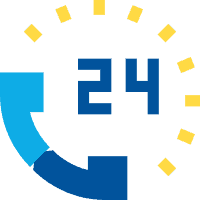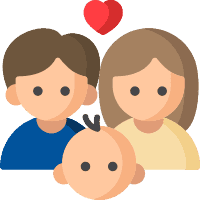Babies babble. It’s an adorable sound–just the thing that brings a smile to every (exhausted) parents’ lips. Before you know it, your time together will be filled with nonstop “goo”s and “gaa”s (not to mention a few “aww”s on your part).
Babbling isn’t just an excuse for your baby to be (very, very) cute. It’s also a playful way to experiment with creating new speech sounds. Most babies start making babbling sounds around the age of four months. Between the ages of 6-9 months, you might notice that this babbling will start including noticeable M, B, and P sounds. These are among the first speech sounds that most young children master and begin using in everyday speech.
As a parent, there are some ways you can inspire your little tyke to keep babbling in a way that encourages those M, B, and P speech sounds.
What M, B, and P Have in Common
The M, B, and P sounds are what speech language pathologists call bilabials, and they’re some of the easiest phonemes for babies to learn. All of which is a fancy way of saying that many of these sounds will be among the earliest that your baby might learn to reliably produce. Here’s how each of the sounds work:
- P Sound: The P sound is made by pressing the lips together and releasing air in a puff.
- B Sound: The B sound is made in much the same way: by pressing the lips together and releasing air out quickly in a puff. But with the B sound, the vocal cords are also activated.
- M Sound: An M sound is made by pressing the lips together and activating the vocal cords (also called the larynx). But you don’t force air out as you would with a B or P sound (there is no puff, in other words).
How to Help Practice B, P, and M at Home
Your baby’s babbling is probably going to bring you a ton of joy–it’s adorable and cute (there are probably giggles, gurgles, and bubbles and all the things we love about babies). But it also signifies that your bundle of joy is getting ready to start talking!
Better still, you can be more than a passive observer as your baby starts toying with speech. There are ways you can help your baby practice these sounds in a comfortable, joyful, and supportive way. Some of the most effective include:
- Read to your baby: Books are good for kids of any age–even babies between 6-9 months old. You can choose books that favor a fair amount of alliteration using M, B, and P sounds (for example, Baa, Baa Black Sheep or Pat the Bunny). Babies love hearing all those fun sounds (they also love chewing on the thick pages of these books, so prepare yourself for that).
- Get in on the Babbling Fun: When you listen to your baby babbling, start repeating some of the phrases you hear. If your baby is saying, “babababa” (roughly translated), you can repeat back the single syllable: “ba.” See if your baby will repeat this solo syllable.
- Repeat fun sounds in context: Opening up that can of sealed baby food? Say “pop!” every time you do. You can do the same when your baby starts making (and bursting) bubbles. You can also emphasize the “boo!” when you’re playing peak-a-boo. Repeat the words at the same time during the same activity to make them more impactful (and give your baby a little added context.)
- Hum, or encourage your child to hum. Humming a catchy tune can help the child use the vocal cords while keeping their lips together.
- Play in front of a mirror: This technique can be pretty straightforward. Simply sit in front of a mirror with your little tyke in your lap and take turns saying words that feature M, B, or P sounds. This will give your baby a chance to visually see their mouth movements and visually compare what they see to what they feel.
- Frequently repeat words in the correct context: Young children and babies can quickly pick up on speech sounds simply by listening. So when you make an effort to use M, B, and P words repeatedly and in the right context, you can help your baby get the hang of these sounds.
None of this should be treated like homework or formal practice, by the way (sitting in front of the mirror for sixty minutes a day drilling M sounds like you’re cramming for a high school vocabulary test isn’t going to do anyone any good).
Instead, these are fun, speech-centered games you can play with your baby. After all, babies will learn best through the process of play!
When you’re thinking about B, P, and M sounds, introduce some common words around the house:
- Mama
- Baby
- Pop
- Mine
- Bath
- Bubble
- Puppy
- Bottle
- Ball
When to See a Speech Language Pathologist
In some cases, your baby may not pick up these speech sounds as quickly as you would like or expect. All babies and children learn at a different pace, but if you have concerns you can always seek out a speech language pathologist.
Your speech language pathologist can use tactile and touch cues to help your baby get the hang of articulations associated with B, P, and M sounds. Other techniques can include modeling correct enunciations and providing other exercises that give your baby an opportunity to practice.
Enjoy the Babble as Speech Develops
A speech language pathologist will help determine whether your baby is developing quickly enough on their own or may require some extra help.
But most parents will start by trying gentle exercises for developing M, B, and P sounds in babies at home–and enjoy the baby babble in the process! If you have difficulties, please contact us to schedule an appointment or talk with a speech language pathologist.


